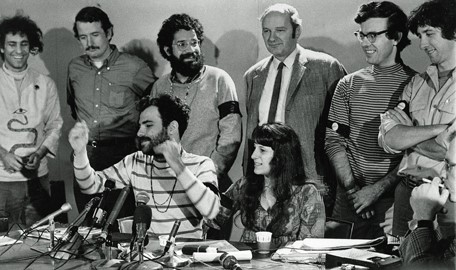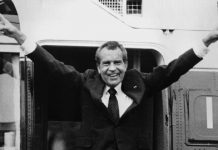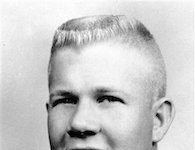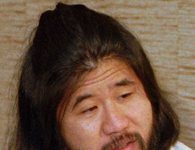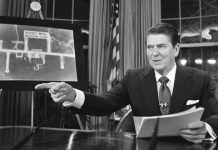On February 18, 1970, five members of the “Chicago Seven” were found guilty of inciting riots at the 1968 Democratic Convention.
Trial Illustrates Cultural Divide in America
The Chicago Seven, originally the Chicago Eight, were anti-war activists who had participated in protests at the 1968 Democratic National Convention in Chicago. The original eight defendants were: Abbie Hoffman and Jerry Rubin, leaders of the countercultural Youth International Party (Yippies); David Dellinger, Tom Hayden, Rennie Davis, leaders of the National Mobilization to End the War in Vietnam (MOBE); Bobby Seale, a Black Panther leader; and John Froines and Lee Weiner.
All eight defendants were charged under the Civil Rights Act of 1968 with conspiring crossing state lines to incite a riot; six were individually charged with inciting a riot, while Froines and Weiner were charged with teaching others to construct incendiary devices.
The trial began in September 1969, just over a year after the riots. Almost immediately the cultural divide between the defendants and traditional society was apparent; 73-year-old Judge Julius Hoffman refused to allow all but one of the defense’s questions for jury selection, resulting in a jury that openly disapproved of the defendants’ lifestyle.
Sources in this Story
- Federal Judicial Center: Teaching Judicial History: Federal Trials and Great Debates in United States History
- University of Missouri-Kansas City School of Law: An Account of the Chicago Seven Conspiracy Trial of 1969-70
- Time: Verdict on the Chicago Seven: From Court to Country
- New York University Archives: 1968
- CNN AllPolitics: Brief History of Chicago’s 1968 Democratic Convention
- NPR: Recalling the Mayhem of ‘68 Convention
- Smithsonian Magazine: 1968 Democratic Convention
The defendants, particularly Rubin and Hoffman, showed little respect for court decorum, wearing casual clothing, putting their feet on the table, eating snacks and frequently interrupting the proceedings with jokes, songs and criticisms. Seale, angry that he could not represent himself, was particularly outspoken, calling Judge Hoffman a “pig” and a “racist.” At one point, Hoffman ordered that Peale be bound and gagged; he later declared a mistrial and sentenced Peale to four years in prison for contempt.
The trial continued for the remaining defendants, the Chicago Seven. The defense called counterculture icons such as Arlo Guthrie, Timothy Leary and Allen Ginsberg to testify, while the prosecution presented a “surprisingly weak” case according to UMKC law professor Douglas Linder. The trial concluded with a “two-week period marked by increasingly bitter outbursts by the defendants and their attorneys, and by almost irrational overreactions by Judge Hoffman,” writes Linder.
The jury acquitted all seven defendants of conspiracy, but convicted Rubin, Hoffman, Dellinger, Hayden and Davis of individually inciting riots. Froines and Weiner were acquitted of all charges. Judge Hoffman sentenced the five guilty defendants to the maximum five-year prison sentences, and issued prison sentences to all defendants and their lawyers for a combined 159 counts of criminal contempt.
“The trial thus ended with the same total hostility and mutual incomprehension that stained it from the start,” wrote Time. Herbert Ehrmann, the counsel for Nicola Sacco in the Sacco and Vanzetti trial, remarked “The conduct of the judge and the actions of the defendants were all disgraceful. The whole episode was a disgrace to American justice.”
In November 1972, an appellate court overturned the rulings because of improprieties in jury selection and exclusion of evidence. “In unsparing language, the court of appeals censured Judge Hoffman and the government attorneys for their open hostility toward the defendants and their failure to fulfill ‘the standards of our system of justice,’” writes the Federal Judicial Center.
The University of Missouri-Kansas City School of Law provides the trial transcript and other court documents. It also includes biographies of the defendants, attorneys and Judge Hoffman.
Related Content
Background: The Democratic Convention
Prior to the Democratic National Convention of 1968, America had experienced a tumultuous year. Both Martin Luther King Jr. and presidential candidate Robert Kennedy had been assassinated. President Lyndon Johnson had become so unpopular that he chose not to run for re-election, and the Tet offensive had created a wave of anti-Vietnam sentiment.
Anti-war organizations, including MOBE and the Yippies, planned to stage protests around the convention. Mayor Richard Daley, intent on maintaining order, called in 12,000 Chicago police, 7,500 Army troops and 7,500 national guardsmen on hand for the five days of the convention. The convention hall was heavily guarded and protected by barbed-wire fences.
As Hubert Humphrey secured the Democratic nomination in a confrontational nomination process, the Windy City was consumed by rioting. Protesters ignored the city parks curfew and tried to march on the convention site. En route, they were met by the police, who beat numerous individuals—both demonstrators and bystanders.
“The 1968 Chicago convention became a lacerating event, a distillation of a year of heartbreak, assassinations, riots and a breakdown in law and order that made it seem as if the country were coming apart,” writes Haynes Johnson in Smithsonian Magazine. “In its psychic impact, and its long-term political consequences, it eclipsed any other such convention in American history, destroying faith in politicians, in the political system, in the country and in its institutions. No one who was there, or who watched it on television, could escape the memory of what took place before their eyes.”


